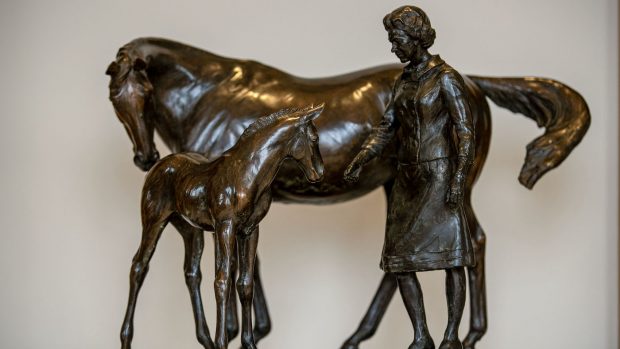With the Tattersalls Guineas Breeze Up and Horses In Training sales having taken place over the past couple of days (3-4 May), Horse & Hound discovers what goes on behind the scenes and what exactly happens during a breeze up sale.
With a total of 234 breeze up two-year-old horses listed in the catalogue, the horse sales in Newmarket is a busy time for many. Star Bloodstock consignor Byron Rogers explains the intricacies when preparing a horse for a breeze up, and their daily routine while at the sales.
“The breeze up sale concept started back in the 1970s in America. A saddle and tack would be put on a horse and they would do a little canter up the straight. It then came over to Europe and has been very successful,” says Byron.
He adds the general idea of a breeze up is to take a young horse and work it in gallop over two furlongs, which is considerably shorter than the minimum five-furlong distance in a race.
From this short gallop past (‘breeze up’) buyers can get a good view of which horses they like. Buyers are looking for horses that have potential to continue in training for future success on the track.
“As long as the horses are travelling well and doing everything right in the breeze, then the buyers will hopefully be buying,” adds Byron.
So what is the daily routine for the 200-plus horses during the breeze up sales?
“Before the breeze we would normally get here at 7am to check the horses’ feet, temperatures and legs for heat or other issues. Afterwards, we take them out for a 20-minute walk and then take them over to the track,” he explains.
“As the sale day nears, you may do less work [with the horses], as you have done all you need to do already — you should only need to work them over one or two furlongs. It really depends on the horse. For a smaller, lighter filly, you don’t need to do as much work as you would do with a big, strong colt.
“After, you bring them back to the stables for feeding and later check there is no dramas from the work they’ve done. The first thing you want to see is how they recover. It is important to see a horse that comes out bouncing and happy, that the work they have done was not too hard. We are trying to sell something that a trainer will want to train on with and not a used product.”
In this week’s issue of Horse & Hound magazine (3 May 2018) we celebrate The Queen’s dedication to Royal Windsor, as the show prepares to celebrate its 75th anniversary





